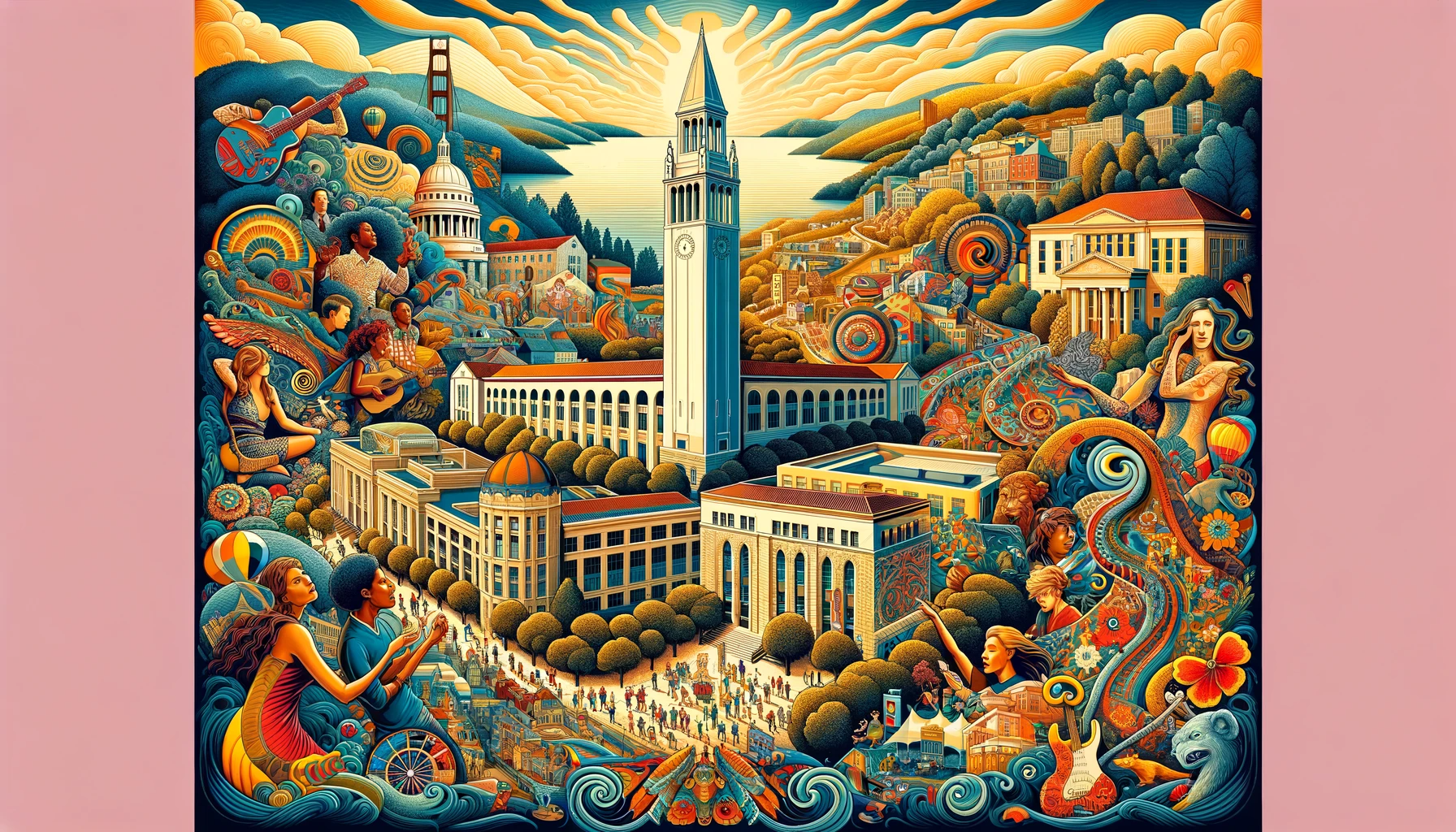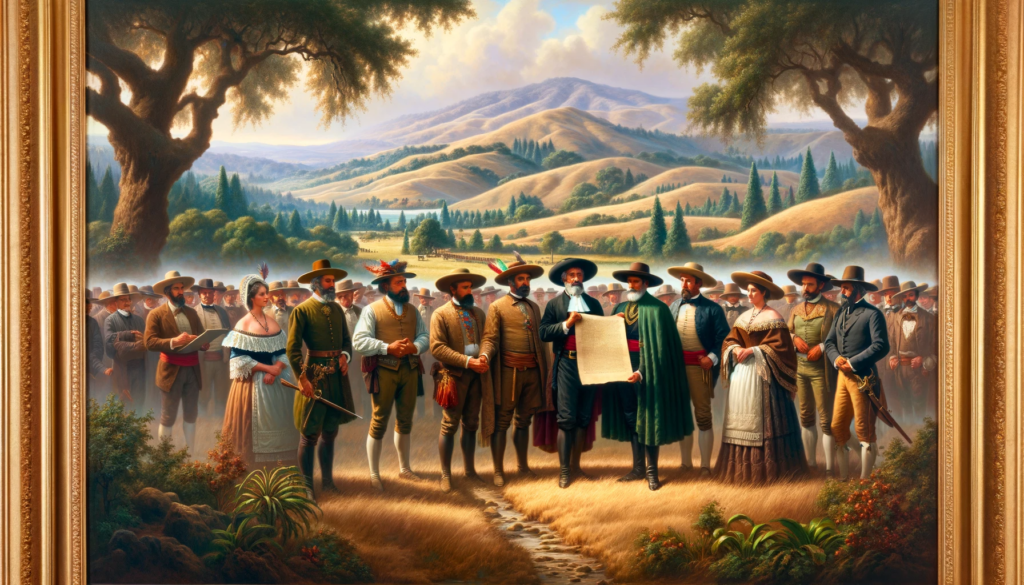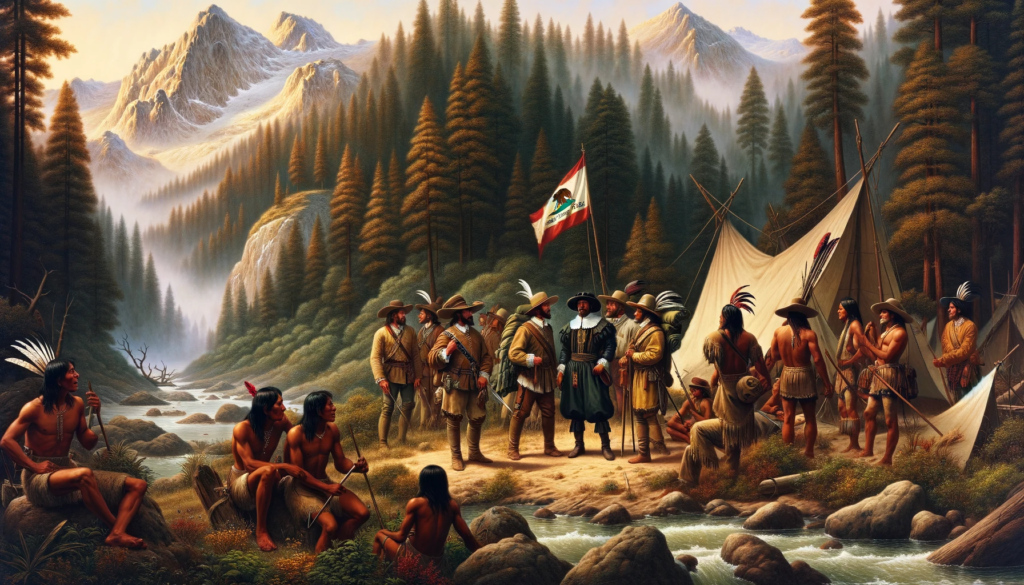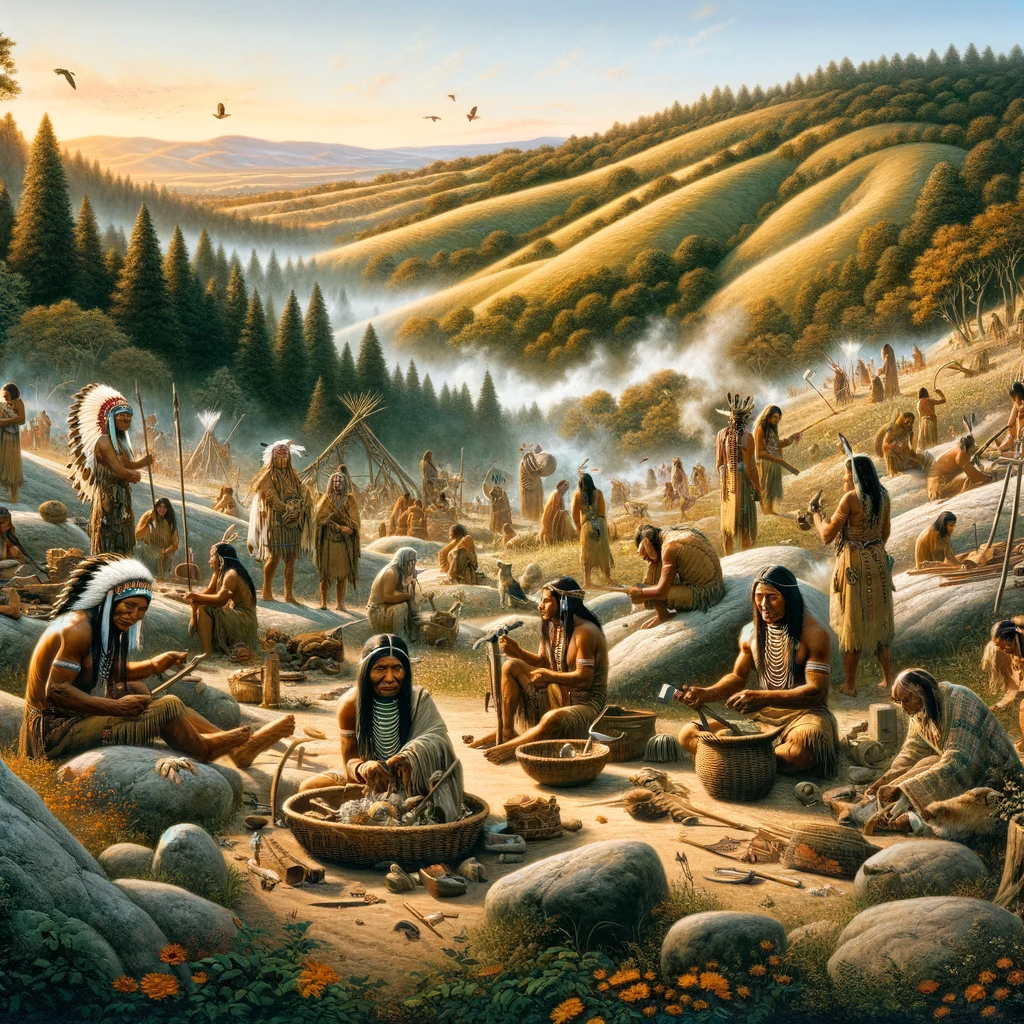The Indigenous Roots: Unearthing the Earliest Cultures
The cultural history of Berkeley, California is a tapestry woven from different historical periods and cultures. The earliest threads of this vibrant tapestry can be traced back to the region’s indigenous roots. Long before the arrival of European colonizers, Berkeley was home to the Ohlone tribe. These early inhabitants had a profound connection with nature, hunting local wildlife for sustenance and utilizing native plants for medicinal purposes. The Ohlone people’s lifestyle was intrinsically tied to the seasons and their environment. They migrated within their territories in accordance with seasonal changes, moving between their summer and winter sites. The tribe also held religious ceremonies that reflected their appreciation for the land and its resources. They constructed shellmounds, which were ceremonial burial sites that also served as territorial markers. Several of these shellmounds have been discovered throughout Berkeley, providing archaeologists with invaluable information about this ancient culture. However, despite the rich heritage left behind by these indigenous inhabitants, much of their history remains shrouded in mystery due to limited written records. What we do know has primarily been pieced together through archaeological discoveries and oral histories passed down through generations. It is important for us to continue exploring and appreciating these indigenous roots as they form an integral part of Berkeley’s diverse cultural history. After all, understanding our past is key to shaping our future.
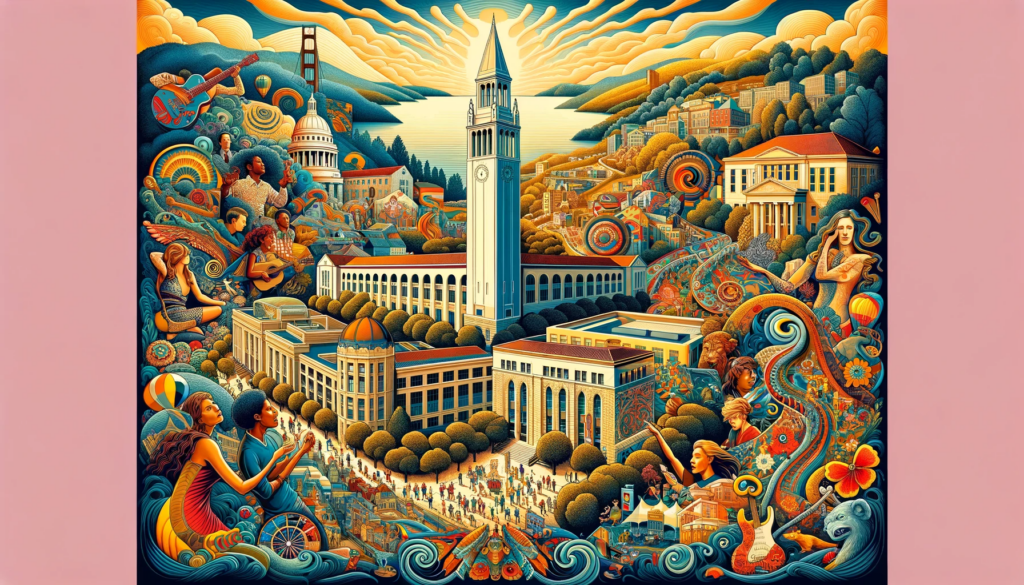
Spanish Colonization Era and its Influence
The cultural tapestry of Berkeley, California continued to evolve with the arrival of Spanish colonizers in the 18th century. This period, known as the Spanish Colonization Era, introduced new societal structures and traditions that deeply influenced the region’s social fabric. The missionaries from Spain established missions throughout California, including nearby areas such as San Francisco and Santa Clara. While their primary purpose was to convert the indigenous people to Christianity, these missions also served as centers for agricultural development. Spanish influence extended beyond religion and agriculture; it also permeated into architecture, language, and local customs. The architectural style of Spanish Missions characterized by adobe walls and tile roofs can still be seen in some of Berkeley’s historical landmarks today. Furthermore, many place names in Berkeley reflect this Hispanic heritage, a testament to the enduring linguistic imprint left by the Spanish colonizers. However, it is also critical to acknowledge that this era was marked by significant conflict and loss for the indigenous population. The arrival of European diseases decimated native tribes while forced conversion disrupted traditional cultures and lifestyles. Despite these hardships, elements of native culture endured through a process of syncretism where indigenous beliefs were blended with those introduced by the colonizers. In this manner, both Spanish and Indigenous contributions continue to shape Berkeley’s unique cultural landscape today without necessitating an explicit conclusion or finality to their impacts.
Gold Rush Impact on Local Culture
The mid-19th century brought about an unprecedented chapter in Berkeley’s cultural history – the California Gold Rush. As news of gold discovered at Sutter’s Mill spread, thousands of prospectors from around the world flocked to California, hoping to strike it rich. This influx resulted in a dramatic population boom and a diversification of cultures as people from various backgrounds and nationalities converged upon the state. Berkeley was not exempt from this change; it too saw its landscape transform with the arrival of aspiring miners, merchants, and individuals seeking new opportunities. As Berkeley’s population grew, so did its cultural diversity. The Gold Rush attracted settlers from China, Europe, Australia, and South America alongside migrants from other parts of the United States. Each group brought with them their unique customs, languages, food practices, and ideologies which added to the town’s rich cultural tapestry. For instance, the Chinese immigrants introduced elements of their traditional architecture and cuisine while Irish settlers brought their Gaelic influences into local music and festivities. Just by walking down its streets today or visiting one of many ethnic restaurants or multicultural festivals held annually in Berkeley, one can experience firsthand this vibrant blend of cultures that came together during this period. Despite the passage of time since the Gold Rush era ended in 1855, it continues to leave an indelible mark on Berkeley’s identity till today. The city’s commitment to inclusivity and acceptance can be traced back to this period when different cultures intermingled freely bringing forth a shared sense of community spirit. Moreover, the economic growth spurred by gold mining laid a foundation for future developments like universities and industries that continue shaping Berkeley’s socio-cultural environment today. It is through understanding such historical events that we appreciate how they have influenced present-day realities – forming an integral part of our collective memory while constantly informing our path forward.
Historic Landmarks: A Glimpse into the Past
Berkeley is not just known for its diverse culture and inclusive community, but also for its rich architectural heritage. The city’s skyline is adorned with an array of historic landmarks that stand as silent witnesses to the city’s vibrant past. Each landmark tells a unique tale, some dating back to the Gold Rush era, while others reflect the progressive mindset that has characterized Berkeley over the years. These structures are more than just aesthetic additions; they are embodiments of the city’s cultural evolution and historical journey. Take for example, the renowned Sather Tower, commonly known as the Campanile. This iconic bell tower is one of Berkeley’s most recognizable landmarks and serves as a symbol of the University of California, Berkeley. Constructed in 1914, it stands tall at 307 feet and offers panoramic views of the cityscape, providing a visual linkage between past and present. Another significant building is the First Church of Christ Scientist. It was designed by Bernard Maybeck in 1910 and showcases an innovative blend of Byzantine, Romanesque and Gothic styles – a testament to Berkeley’s creative spirit. In contrast to these grand structures sit quaint Victorian houses dotting areas like Elmwood District – each carrying their own charm from a bygone era yet blending effortlessly with modernity around them. These residences provide glimpses into Berkeley’s past domestic life while adding distinct character to its streetscape today. Rather than concluding this section with definitive statements about Berkeley’s architectural heritage, let us pose a thought: each brick in these buildings represents a story; every archway echoes narratives from yesteryears; every windowpane reflects fragments of history that have shaped our present reality. It’s through exploring these historic landmarks that we continue discovering the multifaceted cultural history embedded within them – inviting us all on an ongoing journey through time.
The Cultural Renaissance: Exploring the 1960’s Revolution
The cultural revolution that swept through Berkeley in the 1960s was a significant chapter in the city’s history, marking a transformative period of social and political change. This era, often referred to as ‘the Sixties’, was characterized by counterculture movements, protests, and radical thinking that challenged societal norms and expectations. It was during this time when Berkeley became a central hub for free speech and anti-war activism, shaping its identity as a progressive city. One cannot discuss this period without mentioning the pivotal Free Speech Movement (FSM) that transpired on the University of California, Berkeley campus. The movement began in 1964 when thousands of students rallied against the administration’s restrictions on political activities, advocating for their right to free speech and academic freedom. This protest sparked widespread attention and ignited similar demonstrations across other campuses nationwide, positioning Berkeley at the forefront of student-led activism. Berkeley’s cultural renaissance extended beyond politics into various forms of artistic expression such as music, literature, and visual arts. The city became a breeding ground for folk music with venues like the Freight & Salvage Coffeehouse providing platforms for performers. Authors like Ursula K. Le Guin found inspiration in Berkeley’s thriving literary scene while artists were drawn to its vibrant community – all contributing to an explosion of creativity that further enriched the city’s cultural landscape during this era. Thus, reflecting upon this revolutionary period allows us to understand how it has left an indelible mark on Berkeley – influencing not just its cultural fabric but also shaping its enduring legacy as a beacon of progressivism and intellectual freedom.
University Influence: Academic Contributions to Local Culture
The University of California, Berkeley has played a pivotal role in shaping the city’s cultural and intellectual identity. Founded in 1868, UC Berkeley is renowned worldwide for its rigorous academic standards and revolutionary research, an accolade that greatly contributes to the city’s reputation as a global center of learning and innovation. The university’s influence permeates throughout the city, extending beyond its classrooms into various aspects of local culture – from arts and literature to politics and social activism. Indeed, UC Berkeley has been instrumental in fostering an environment that encourages intellectual curiosity and free thought. Its faculty and students have consistently pushed boundaries in various fields including science, technology, humanities among others. This spirit of exploration is evident in the myriad of ground-breaking discoveries and inventions that have been born on campus such as the cyclotron invented by Nobel laureate Ernest O. Lawrence or the pioneering research work in computer science by Turing award winner Richard Karp. Moreover, UC Berkeley’s commitment to public service resonates within its students who are often at the forefront of local community initiatives – further amplifying its impact on Berkeley’s societal fabric. UC Berkeley’s vibrant student population also adds to the city’s multicultural atmosphere. With students coming from all corners of the world, they bring with them their diverse cultures, experiences, and perspectives – enriching not just the university but also the broader community. They contribute significantly to local events like international food festivals or cultural performances which celebrate diversity and promote cross-cultural understanding. Thus, through its academic excellence and dynamic student body, UC Berkeley continues to be a vital force driving both intellectual growth and cultural vitality within Berkeley.
The Food Scene: An Exquisite Fusion of Global Cuisines
Berkeley’s food scene is as diverse and vibrant as its community, reflecting the city’s multicultural background and progressive values. This eclectic mix of culinary influences is a testament to the fact that Berkeley is not just an academic powerhouse but also a gastronomic hub – offering residents and visitors alike a delightful array of dishes from around the world. The city enjoys a rich tradition of organic, farm-to-table dining which can be traced back to Alice Waters’ iconic Chez Panisse – a pioneering restaurant that sparked the local food movement in the 1970s. Today, Berkeley continues this legacy through its numerous farmers markets and locally-owned eateries that prioritize fresh, sustainably-sourced ingredients. Moreover, one cannot talk about Berkeley’s food scene without mentioning its plethora of ethnic restaurants that offer an exquisite fusion of global cuisines. From tantalizing Thai curries and sumptuous sushi to mouth-watering Mediterranean falafels or spicy Indian chaats – there’s something for every palate in Berkeley. These establishments not only cater to the diverse dietary preferences of locals but also provide an opportunity for people to experience different cultures through their taste buds. This culinary diversity is further enriched by UC Berkeley’s international student population who bring with them unique flavors from their home countries – influencing local restaurants to incorporate these tastes into their menus. Berkeley’s reputation as a foodie haven extends beyond its innovative restaurants into other facets of its culinary culture. The city hosts various food festivals throughout the year such as ‘Taste of North Berkeley’ or ‘Chocolate & Chalk Art Festival’- where local chefs showcase their creative renditions of classic dishes while artists create beautiful sidewalk murals using colorful chalks. Furthermore, organizations like Kitchen on Fire and Bauman College offer cooking classes and nutrition education programs – encouraging residents to take part in creating healthy, delicious meals themselves. Thus, whether you’re a discerning gourmet or someone who simply loves good food – Berkeley offers an exciting gastronomic journey that celebrates the city’s rich cultural history and its commitment to sustainability.
Artistic Landscape: Celebrating Multicultural Expression
Berkeley’s rich cultural history is beautifully reflected in its vibrant artistic landscape. The city exudes a deep appreciation for multicultural expression, which is vividly seen in its diverse art scene. This thriving community of artists and creatives draws from the city’s unique blend of backgrounds, experiences, and influences to create art that speaks to Berkeley’s collective identity and spirit. From colorful murals adorning the city walls to innovative theater productions at the Berkeley Repertory Theatre or experimental music performances at Freight & Salvage Coffeehouse – the artistic energy of Berkeley is palpable at every corner. Moreover, Berkeley’s commitment to celebrating these varied forms of artistic expression extends beyond just hosting performances and exhibitions. The city is home to several institutions dedicated to nurturing creativity and fostering appreciation for arts among its residents. For instance, the Arts Research Center at UC Berkeley promotes collaborative research among artists and scholars, while organizations like the Kala Art Institute provide studios, galleries and educational programs for local artists. This nurturing environment has fostered a thriving community of talented creatives who continue to enrich the city’s cultural fabric through their work. Berkeley does not limit its artistic endeavors within four walls – it spills out onto the streets as well! In sync with its socially conscious ethos, many public art installations around the city reflect themes of social justice, environmental sustainability or historical events – making them not only visually appealing but also deeply thought-provoking. Festivals such as ‘Berkeley Artisans Holiday Open Studios’ provide platforms for local artists to showcase their work directly to the public. Thus, through its vibrant artistic landscape, Berkeley truly lives up to its reputation as a hub for multicultural expression – weaving together various strands of creativity into a beautiful tapestry that reflects its rich cultural history.
Festivals and Events: Community Bonding Traditions
The city of Berkeley, California, is known for its vibrant community spirit, which is prominently reflected in its lively calendar of festivals and events. These celebrations serve multiple purposes – from promoting local arts and crafts to honoring the city’s rich multicultural heritage. They act as a platform where locals can gather together, share their experiences, and bond over shared traditions and values. What’s more fascinating is that these events often incorporate elements of social activism – staying true to Berkeley’s reputation as a hotbed for progressive ideas. One notable event that exemplifies this spirit is the annual Solano Avenue Stroll. This mile-long street festival showcases local businesses while featuring live music, food stalls offering diverse cuisines, and numerous craft vendors selling unique handmade items. It’s not just a fun-filled day out but also an opportunity for residents to support local enterprises and appreciate the diversity within their community. Similarly, the Berkeley Kite Festival serves as another instance where community bonding takes center stage. With hundreds of colorful kites filling the sky against the stunning backdrop of the San Francisco Bay, it’s a sight to behold! The festival encourages participation from all age groups making it a cherished tradition for many Berkeley families. However, festivals in Berkeley are not just limited to family-friendly outings or commercial celebrations; they also serve as essential platforms for political expression and advocacy. For instance, Indigenous People’s Day Pow Wow and Indian Market is an event that honors Native American cultures while educating attendees about indigenous rights issues. It invites participation from Native American tribes across North America who share their music, dance forms, artistry through this event – thus fostering understanding among different communities while advocating for social justice causes. Thus, through these myriad festivals and events, Berkeley weaves together various aspects of its cultural tapestry – strengthening community bonds while simultaneously nurturing an ethos of inclusivity and social consciousness.
Modern Day Cultural Resilience and Diversity
Berkeley’s cultural resilience and diversity are evident in its modern-day community dynamics. Its residents’ commitment to social justice is reflected in their everyday lives, from the city’s local businesses to its educational institutions. For instance, the University of California at Berkeley is renowned for both its academic excellence and its active student body that regularly engages in various forms of activism, reflecting the city’s spirit of resistance and progressive thinking. The city’s ceaseless struggle for equality and fairness has been a significant driving force behind Berkeley endowing itself as a sanctuary city, providing protection for undocumented immigrants. In addition to political advocacy, arts and culture are also vital facets of Berkeley’s resilient diversity. The Freight & Salvage Coffeehouse serves as an iconic symbol of this aspect. Established in 1968 during the folk music revival movement, it began as a small business that sold used furniture during the day and hosted local musicians at night. Over time, it evolved into a thriving music venue that now showcases artists from around the world while still staying true to its roots – promoting traditional music forms and nurturing the local musical talent. It is not just a place for entertainment but also serves as a platform for cultural exchange – reinforcing Berkeley’s reputation as an inclusive community. Berkeley’s multiculturalism isn’t restricted to its political or artistic arenas alone; it even extends to its culinary scene. A walk down any street in Berkeley will reveal an eclectic mix of eateries offering cuisine from all corners of the globe – be it Ethiopian food at Café Colucci or Korean delicacies at Bowl’d BBQ. This fusion of flavors beautifully encapsulates the town’s cosmopolitan character – each bite serving as a testament to the rich intermingling of cultures within this Californian city. So while there may be no grand finale or concluding remark needed to sum up Berkeley’s cultural history, one thing remains clear: Its modern-day resilience and diversity continue to shape its cultural narrative, making it an inspiring model for other cities to emulate.


